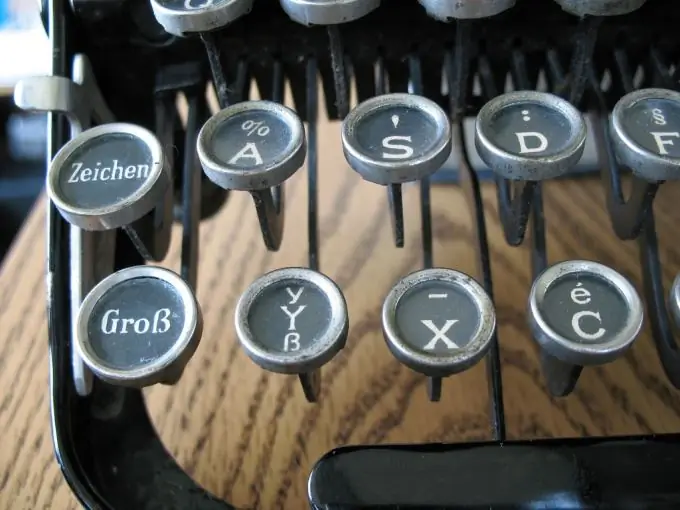In German, there are special characters that are not printed on the keyboard and are not used by the system as standard. This often becomes an obstacle for learners of the German language, however, the German layout can be easily customized using the operating system, or using a special set of characters from the Latin keyboard.

Instructions
Step 1
If you do not want to make any settings in the system itself, then you can use the appropriate character sets. To do this, switch to the English keyboard layout and hold down the "ALT" button. While holding it, enter the corresponding numbers. To get the symbol "ß", press consecutively the numbers 0, 2, 2, 3. To get a large "Ä", dial 0, 1, 9, 6, and for "ä" enter 0, 2, 2, 8. U with an umlaut is entered using the combination 0, 2, 2, 0 (small letter 0, 2, 5, 2, respectively). Ö is 0214 and ö is 0, 2, 4, 6.
Step 2
In order not to remember these keyboard shortcuts, you can customize the German keyboard layout. Go to "Start" - "Control Panel". Select "Keyboard".
Step 3
Select the "Input Language" tab. Click the "Add" button and select "German Layout" from the menu provided.
Step 4
Click on the icon with the name of the language (on the Windows panel) and select "DE". The German keyboard is slightly different from the English one, so you should learn the appropriate character set. The letter "ü" is in the place of the Russian "x". The symbol "ö" on the letter "zh", and "ä" corresponds to the Russian "e". The letter "Z" will be in place of the Latin "Y".
Step 5
To see how the letters are located on the keyboard, go to "Start" - "All Programs" - "Accessories" - "Extras. features "-" On-screen keyboard ".
Step 6
You can also use various online services of the "on-screen keyboard", with which you can type certain text, select, and paste it where you want. To type a character, just click on the desired button of the presented keyboard.






